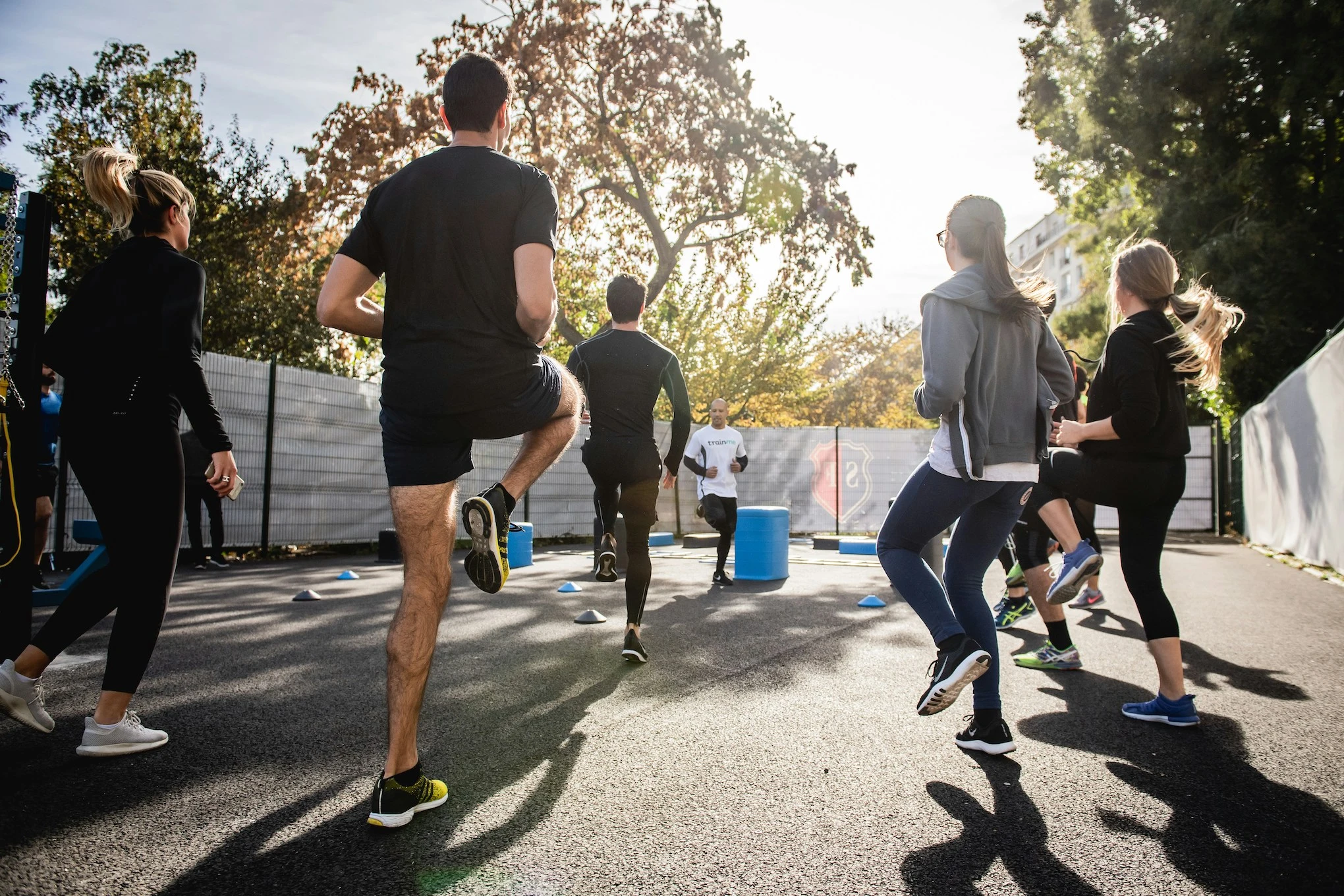Fitness Connections: The Impact of Goal-Challenge Groups on Exercise and Well-Being
150 to 300 minutes of moderate-intensity physical activity per week, or 30 to 60 minutes of exercise per day distributed across five days, is the recommended amount of activity one should target to avoid many psychological and physiological illnesses such as obesity, dementia, diabetes or depression. As it stands, only 43.5% of the United States population aged 18-60 engage in the recommended amount of physical activity. On the other hand, to experience low levels of physical activity alongside high levels of loneliness puts one at greater risk of poor mental and physical health, and premature death. This article explores the various aspects of fitness achievement within a group, including community support and social and exercise identity, and their implications for the promotion of healthy lifestyles.
The Benefit of Community in Fitness
Research suggests that collective physical activity, such as running clubs, group play, sport, dance and group exercises provide both physical and psychological benefits for participants. In the UK, parkrun emphasizes a supportive and positive atmosphere that encourages participants to interact before, during, and after their runs. Studies show that participants often reported higher levels of subjective enjoyment and energy when accompanied by friends or family during these activities (Davis et al., 2021). Furthermore, programs like parkrun have demonstrated that regular participation in community-based exercise events can reduce social isolation and loneliness by giving participants constructive opportunities for social connection (Davis et al., 2021).
Experience of positive affect while exercising is a key determinant of fitness regime adherence. The intense emotional experiences that happen while socializing or belonging to a goal-challenge group suggest a possibility for corresponding increases of intrinsically motivated engagement and enjoyment of physical activity. It is hypothesized that positive and supportive social engagements buffer and reduce unpleasant exercise affects, such as fatigue and pain. Altogether, these engagements can increase performance outputs, sense of achievement, and participation levels in exercise.
Social relationships within these contexts create a sense of belonging, which can motivate individuals to maintain regular physical activity. Group exercise memberships provide diverse forms of social support, which can foster increased physical activity levels and enhanced exercise identity among members. This alignment with a goal-challenge community helps individuals internalize an active lifestyle and significantly increases their overall well-being.
Social Support: Various Forms and Their Importance
There are five research-backed forms of functional social support — emotional, informational, companionship, instrumental, and validation. Excluding instrumental, all forms of social support are positively associated with exercise identity, which, in turn, is strongly associated with the amount of physical activity individuals engage in per week (Golaszewski et al., 2022). Emotional support involves encouragement during challenges. Companionship support relates to having someone to engage with physically. Informational support provides essential tips for achieving fitness goals. Instrumental support relates to any assistance that enhances participation. Finally, validation support offers a space for social comparison and plays a role in self-esteem.
Further research is needed to understand the dynamic relationships between forms of social support and exercise identity and adherence over time. For instance, women engaging in group exercise perceive all five types of social support (Golaszewski et al., 2022), while men perceive the forms of emotional, informational, companionship, and validation support, but not instrumental support. As demonstrated by Huang et al. (2023), exercising in a group led to higher daily walking numbers and calorie expenditure among older adults. Social support had a 66.3% effect on the health-promoting lifestyle of older adults including duration, frequency and intensity of physical activity, sleep, positive growth, life goals, vision, social support from friends and peers, satisfaction with self, and stress management. This correlation highlights the benefits of incorporating supportive social networks into fitness regimens.
The Role of Groups in Promoting Healthy Lifestyles
Group identity can significantly influence an individual’s commitment to exercise routines. Goal-related groups can be helpful due to the social identification process. Research shows that by allocating members to appropriate small groups based on health and social status, by providing effective information, and by facilitating in-group contact, group members can better achieve their health goals (Zhou & Zhu, 2022). The social identity that arises from comparing oneself to a group influences an individual’s attitudes and behaviors, including involvement, internalization, and attitude toward change. Moreover, social participation helps the individual internalize the social norms that lead to the adoption of the norms of being healthy and the subsequent achievement of beneficial outcomes (Zhou & Zhu, 2022).
Research shows differentiated impacts based on gender. In Golaszewski et al.’s study (2022), group exercise memberships were significantly associated with increased MET-minutes (the American Heart Association recommends at least 150 minutes of moderate-intensity aerobic exercise per week, which is roughly equivalent to 500 MET minutes) and stronger exercise identity for women. Furthermore, for men and women, there were significant associations between group membership and emotional, informational, companionship, and validation support.
Conclusion
Fitness doesn’t need to merely be about individual effort or competition; rather, human connectivity can be designed into a fitness program which can have significant impacts on physical health and mental well-being. Through community building, encouraging social support mechanisms, and fostering shared identities among participants, fitness can be transformed into a more holistic pursuit—a journey taken together rather than alone. By embracing fitness connections, i.e., approaching fitness within the context of a group or greater social network, it is possible for an individual to achieve lasting improvements in both physical health and overall life satisfaction.
References:
- Davis AJ., MacCarron P., Cohen E. (2021). Social reward and support effects on exercise experiences and performance: Evidence from parkrun. https://pmc.ncbi.nlm.nih.gov/articles/PMC8443045/
- Golaszewski NM., LaCroix AZ., Hooker SP., Bartholomew JB. (2022). Group exercise membership is associated with forms of social support, exercise identity, and amount of physical activity. https://pmc.ncbi.nlm.nih.gov/articles/PMC9053316/
- Huang WY., Huang H., Wu C-E. (2023). Physical Activity and Social Support to Promote a Health-Promoting Lifestyle in Older Adults: An Intervention Study. https://pmc.ncbi.nlm.nih.gov/articles/PMC9658453/
- Zhou Y., Zhu JJH. (2022). How online health groups help you lose weight: The role of group composition and social contact. https://pmc.ncbi.nlm.nih.gov/articles/PMC9290157/



